Don't wanna be here? Send us removal request.
Photo
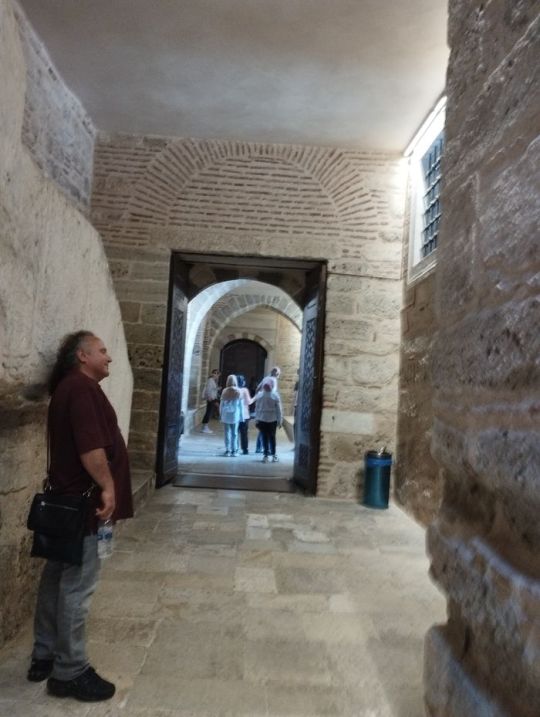
The Patron Saint of Bulgaria
St. John of Ryle
The patron saint of Bulgaria is St. John of Ryle. Although Christianity was first brought to the country by St. Methodius, it is St. John of Ryle who is honored as the patron saint. John of Ryle was originally a shepherd who later became a monk and lived a life of asceticism (a life of simplicity and self-discipline). For twenty years, he lived in the hollow of an oak tree in the mountains that separate Bulgaria and Macedonia. These mountains are now named after him.
The Ryle Monastery
After spending years living in the oak tree, John of Ryle moved to a rocky area that was very hard to reach. It was here that a monastery was built in his honor, now known as the Ryle Monastery. The monastery is a beautiful, medieval building and is one of the most picturesque places in Bulgaria. It is located in a beautiful mountain area, two days’ journey south of Sofia, Bulgaria’s capital. The monastery is often visited by tourists, who are warmly welcomed by the monks who live there Private Tour Guide Ephesus.
Recent Controversies Surrounding the Monastery
The monastery has gained recent attention due to an incident involving Miss Stone, a kidnapped American missionary. It was reported that Miss Stone had been hidden within the walls of the monastery, and as a result, soldiers under orders from the Bulgarian government searched the building thoroughly. This search was considered by many to be an invasion of the holy site. The monks were very upset by the intrusion, and the situation caused anger among the Greek Church members in Bulgaria. They blamed American missionaries for the incident and even threatened revenge.
Monks’ Hostility Towards Missionary Activity
The monks at St. Ryle Monastery have shown more hostility to missionary work than other clergy members in Bulgaria. The monks, unlike the more educated parish priests, tend to be less open-minded. Because they live a more isolated life and do not mix much with the outside world, they are often less tolerant of missionary activities.
Suspicions Regarding the Monks’ Involvement in the Kidnapping
It is not completely clear whether the monks of St. Ryle Monastery were involved in Miss Stone’s abduction, but there is no proof that they were. The suspicion that the monks might have had some role in the kidnapping is based on their past relationships with bandits. In earlier times, the remote location of the monastery made it an ideal meeting point for bandits who lived in the surrounding areas. These bandits, who were often peaceful farmers or shepherds, would sometimes resort to robbery when the opportunity arose. They are said to have given generously to the monks, offering game and other food supplies in exchange for the monks’ help.
The monks are believed to have hidden the bandits and their weapons when the police were pursuing them. They also allowed the bandits to meet in the monastery both before and after their raids.
0 notes
Photo
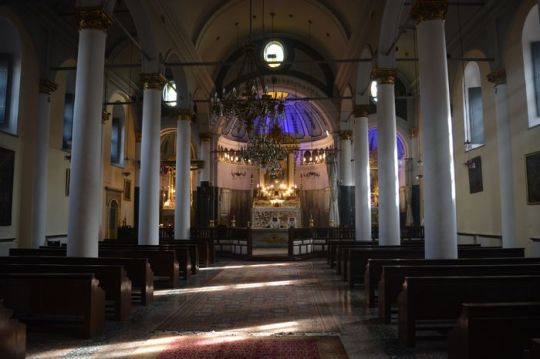
The Soulou Monastery and Its History
The Soulou Monastery, originally founded by Romanus Argyrus, was one of the most important monastic establishments in Constantinople. The monastery’s church survived the Turkish conquest and remained under Greek control until 1643, when Sultan Ibrahim handed it over to the Armenian community. Since then, the church has been destroyed by fire twice. Today, it has been rebuilt and is known as St. George Church. The church is often called Soulou Monastir (the Water Monastery) because it is located next to an ancient cistern. It stands in the Psamathia district, at the southern slope of the Seventh Hill.
The Xerolophos and the Forum of Arcadius
The Xerolophos was the name of the Seventh Hill in general, but it was sometimes used to refer specifically to the Forum of Arcadius (which is located in Avret Bazaar). The forum was located at the summit of the Seventh Hill.
Location of the Exokionion
Based on this information, the Exokionion must have been situated between the Sigma and the Forum of Arcadius, occupying the upper western slope of the Seventh Hill Sofia Guided Tours.
Additional Evidence for the Location of the Exokionion
There are a few more pieces of evidence that support this conclusion. First, the Church of St. Mokius, which was used by the Arians for their religious services in the Exokionion, stood on the Seventh Hill. The church was located on the road that connected the Sigma to the Forum of Arcadius. Additionally, the church was close to a large ancient cistern known as the Tchoukour Bostan, which was located to the north-west of the Forum.
In summary, the Exokionion was a district on the Seventh Hill, between the Sigma and the Forum of Arcadius. It was a significant area in the early history of Constantinople, particularly in connection with the Arians and their religious services. The church of St. Mokius and the nearby cistern provide further evidence for the district’s location.
0 notes
Photo
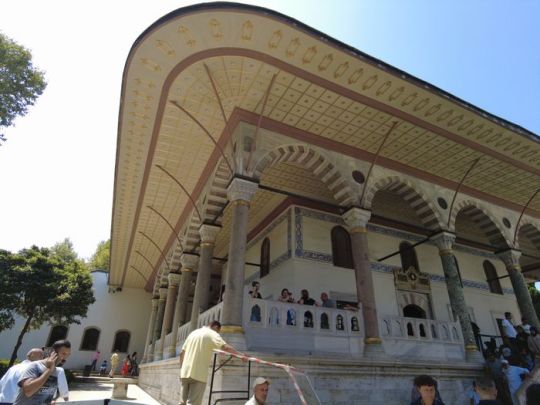
Great Hotels to Stay in Sofia
Sofia has a wide variety of hotels that offer comfort, convenience, and style for all types of travelers. From luxury to boutique hotels, here are some great options worth considering.
Barcelo Festa Sofia
Location: G-7, Blvd. Bulgaria 83 Contact: Tel: +359 2 818 96 18
Located a few kilometers from the city center on busy Bulgaria Boulevard, the Barcelo Festa Sofia is an impressive modern hotel. While the reception area is a bit flashy, the rooms are calm and stylish Bulgaria Trips.
Rooms: Designed in coffee and cream tones, with minimalist, modern bathrooms and full-size bathtubs.
Luxury Category: These rooms are larger, with lounge-style furniture and flat-screen TVs.
Views: South-facing rooms overlook Mount Vitosha, while north-facing ones offer a city view.
Facilities: Wi-Fi, restaurant, spa, gym, conference room, parking
Best Western Hotel City
Location: B-4, ul. Stara Planina 6 Contact: Tel: +359 2 915 15 00
This modern four-star hotel is near Sofia’s historic city center, making it ideal for tourists. Rooms are spacious, clean, and well-maintained. The helpful staff add to the positive experience.
Facilities: Wi-Fi, restaurant, fitness center, air conditioning, business services
Casa Boyana Boutique Hotel
Location: G-6, ul. Ivanitsa Danchev 23, Boyana Contact: Tel: +359 2 805 08 00
A small and stylish boutique hotel in the peaceful Boyana neighborhood near the National History Museum. The hotel features Italian furniture, bold interior colors, and luxury bathrooms.
Views: Excellent city views from the restaurant windows.
Service: The staff are especially welcoming and attentive.
Facilities: Restaurant, Wi-Fi, parking, quiet location, personal service
Central Park Hotel
Location: C-2, Blvd. Vitosha 106 Contact: Tel: +359 2 805 88 88
The Central Park Hotel enjoys a prime city-center location right in front of the National Palace of Culture. It’s close to Sofia’s best shopping, dining, and nightlife spots.
Rooms: Comfortable and well-equipped, many offering great views of the nearby park or Mount Vitosha.
Dining: The hotel restaurant serves modern European dishes with a good wine selection.
Business Services: Offers full office support and secretarial services for business travelers.
Facilities: Wi-Fi, restaurant, business center, air conditioning, conference services
0 notes
Photo
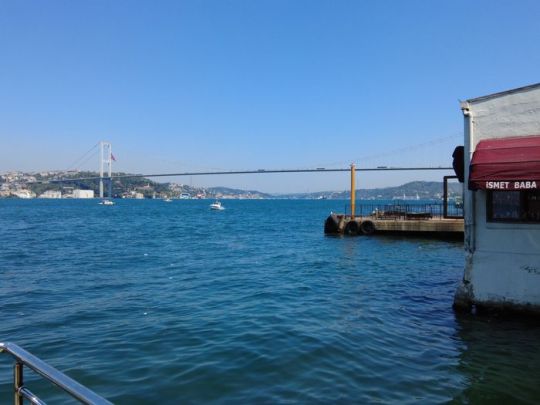
The Burning of Moslem Villages and Atrocities in Macedonia
Burning of Moslem Areas
During the wars, many Muslim villages were burned down. For example, in the town of Jeudje-Vardar, which was occupied by the Greek army, the Muslim quarter was almost completely destroyed. Even near Thessalonica, Greek troops set fire to Muslim villages. In the Drama district, the Greek population engaged in robbery, murder, and rape, targeting the Muslim people, until order was restored by a Bulgarian official Turkey Sightseeing.
Brutal Campaign of Robbery and Murder at Stroumitza
The Carnegie Commission also mentions a particularly brutal campaign of robbery and murder that took place at Stroumitza. This event is described as probably the worst incident of its kind.
A court was set up by Major Grbits, along with Serbian officers and other Bulgarian leaders.
The Muslim victims were brought before the court.
Major Grbits would ask if the person was “good or bad,” and without any discussion or defense, a single voice would condemn them.
Almost all of the victims were sentenced to death. Their money was taken by Major Grbits.
Punishments and Lack of Justice
After the atrocities, a Bulgarian court held a trial and sentenced three people, including Voultchew and Jckekov, to fifteen years of hard labor.
However, no punishment was given to Major Grbits, who was the leader of the operation and ultimately responsible for the atrocities. The Serbian government took no action against him.
Distortion of Reports in the Media
The Carnegie Commission also addresses how the Greek and French newspapers distorted the reports about atrocities in the Kukush region, which were carried out by a cruel guerrilla leader named Donthew. Some reports wrongly claimed these acts were committed by the Bulgarian regular army shortly before the second Balkan war.
The Carnegie Commission report highlights the brutality and injustice that occurred during the Balkan wars, with Muslim villages being destroyed and atrocities carried out by various groups. Many innocent people suffered, and despite some punishments for individuals involved in these crimes, major offenders like Major Grbits were not held accountable.
0 notes
Photo
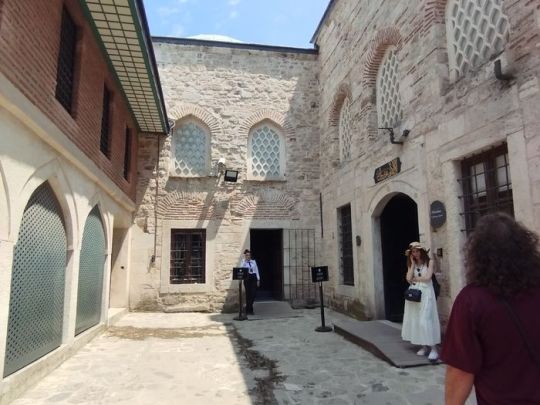
The Bulgarian Border and Cooperation with the GDR
Information Sharing and Surveillance
During the communist era, the Bulgarian government closely monitored not only the movement of people across the border but also their daily lives. Citizens were under constant surveillance, and authorities gathered extensive information about their activities, interests, and even their personal purchases. This surveillance was part of the larger effort to maintain control over the population and prevent any acts of resistance or defection.
Tragic Incident Schoolchildren Shot at the Border
On 29 April 1948, a tragic incident occurred when seven schoolchildren were shot dead while attempting to cross the Bulgarian border into Greece. This event was reported in a newspaper as part of a parliamentary debate on crimes committed in the frontier zones. The harsh measures used to control the borders and prevent escapes were part of the regime’s strategy to eliminate any form of resistance or escape attempts Personal Istanbul Tours.
The authorities did not hesitate to use force, even against innocent civilians, to protect the borders and stop people from fleeing the oppressive regime. The tragic deaths of these schoolchildren highlight the severe measures taken by the communist government to maintain its hold on power, and the lack of compassion or regard for human life in the pursuit of political control.
Surveillance of the Border Zone
The Bulgarian border zone was heavily guarded and controlled. A signboard displayed in the DDR (German Democratic Republic) part of Berlin prohibited passage in certain areas, marking the frontier as a place of strict control and surveillance. These border regions were clearly marked with signs that warned people not to enter, reinforcing the idea that crossing these borders was a dangerous and forbidden act.
The Rabotnitchesko Delo daily newspaper, published in August 1963, even printed a map showing Berlin’s division, with West Berlin divided into three occupation zones: French, British, and American. This map was a part of the broader context of the Cold War, showing how countries were divided and the security measures put in place by both the East and West.
Bulgaria-GDR Cooperation Agreement
In 1988, the Bulgarian Ministry of the Interior and the Ministry of State Security of the German Democratic Republic (GDR) signed a new Agreement on Cooperation and Collaboration. This agreement was a continuation of the Cooperation Agreement that had been signed in 1974 between the two ministries. The new agreement, signed by Bulgarian Interior Minister Stoyanov and his GDR counterpart, Erich Fritz Emil Mielke, was meant to last until 1993.
This cooperation was a reflection of the tight security control shared by Eastern Bloc countries. It included mutual assistance in surveillance, intelligence gathering, and the repression of any anti-government activities. The close relationship between Bulgaria and East Germany exemplified the way in which communist regimes worked together to control their citizens and suppress any efforts to escape or resist the system.
The situation at the Bulgarian border during the communist era was one of strict control and repression. Escape attempts were met with extreme force, and the lives of citizens were closely monitored and restricted. The tragic event of the schoolchildren being shot at the border is just one example of the regime’s brutal tactics. The close cooperation between Bulgaria and the GDR further shows how the Eastern Bloc countries worked together to maintain their authoritarian systems, keeping their citizens under constant surveillance and control.
0 notes
Photo

Kuşadası Motorcycle Festival (KUMOF)
Kuşadası Motorcycle Club (KMK) organized the third Kuşadası Motorcycle Festival (KUMOF) at the Adagöl Mokamp from June 5th to 7th. Erol Özkan, the festival organizer, explained that thousands of local and international bikers come together at this kind of traditional event. He said, “We want to hold panels, workshops, and beach parties, not just at night but also during the day. Our goal is to make this event more professional every year, bringing together people and organizations from the motorcycle world and creating a strong community.” Özkan also mentioned their plan to make the festival an international event to raise the popularity of Kuşadası, celebrate the love for motorcycles, and make it more exciting each year. “Due to the growing number of participants, we chose the central and beautiful Adagöl area as the perfect place for the festival,” he added Coastal Bulgaria Holidays.
Prostitution in Ancient Greece
Sacred Temple Prostitution in Ancient Greece started in the 6th century BC. Over time, as sacrifices to the gods became an important source of income for temples, another form of prostitution, unrelated to temple rituals, developed. Solon, the famous legislator of Athens (640-558 BC), opened the first brothel and used its income to build the Aphrodite Pandemos Temple. These government-owned houses were called Dikterion and were well-organized. They set standard prices and helped avoid extreme price differences. The government collected taxes from these businesses, known as porniketos. The prostitutes were divided into three categories:
Dikteriades: low-class prostitutes serving lower-class men Auletrides: middle-class prostitutes Hetaires: high-class prostitutes, also called “friends”
0 notes
Photo
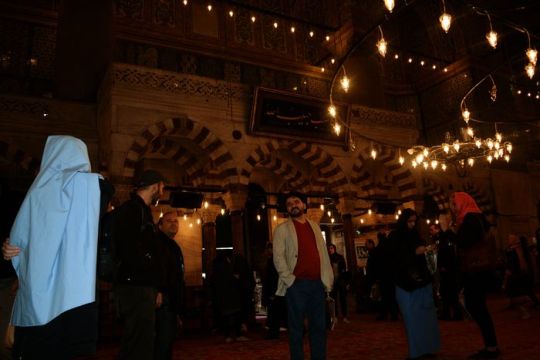
Curiosity of the Innkeeper
The situation became so repetitive that eventually, I had to ask two soldiers to guard the stairs. Despite this, my host’s curiosity could not be stopped. When I decided to wash and shave, I took off my shirt, and he stood by the doorway telling his friends in the street below about everything I was doing. He only spoke Albanian and Turkish, but he would stand for hours listening to my dragoman (interpreter) and me speaking in English. He kept saying, “Wonderful! Wonderful!” because he couldn’t understand how we could understand each other while speaking a language he thought was nonsense.
Strange Habits and Surprises
When I wrote in my diary, he watched me closely with wide eyes, amazed that I wrote from left to right, as it was not the way Turkish is written (which is from right to left). When he learned that my favorite food was Turkish pilau, he invited three cooks from nearby restaurants to come and cook it for me. He pointed at me, proud, and told them this was the honor of their life—to make pilau that I loved Istanbul Day Tour.
The Mystery of Sardines and Cheese
When I opened a tin of sardines, my host was again amazed. He ran and told all his friends about it, and they probably still wonder how the fish got inside the tin. Among the food I had brought with me was a Dutch cheese. He was absolutely astonished. He looked at the red cheese, shook his head, and kept saying, “Wonderful! Wonderful!” He then asked if he could try it, and when he did, he was even more amazed. He told my dragoman that he was more convinced than ever that the English were truly great people, especially if they could grow melons like that!
0 notes
Photo
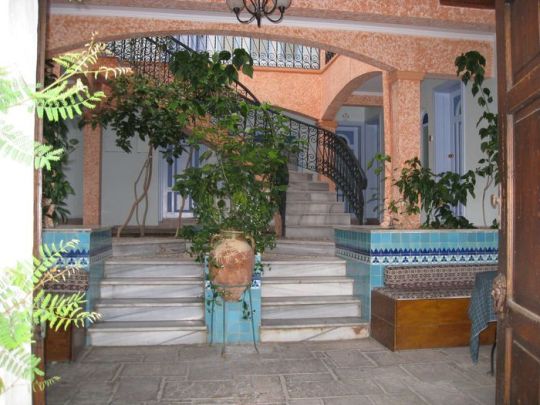
Abdul Hamid's Role in the Balkans
Europe is right to blame many of the problems in the Balkans on Abdul Hamid, but we must also consider his upbringing, his environment, and the traditions of the Caliphate. It’s easy to say “Remove him from Europe,” but he is already in Europe. He controls a large part of it, and we have to deal with him as an autocrat. He holds all civil, military, and most religious power. The country is divided into provinces, called *vilayets*, each ruled by a *Vali*. These rulers receive small salaries but often become very rich Central Synagogue.
The Confused Legal System
The law in Turkey is complicated and often conflicting. There is the *shari’a*, or sacred law of Islam, and the civil and commercial law, which is based on the French Code Napoleon. In practice, Christian testimony is never accepted over that of a Muslim, even though it is theoretically supposed to be. All government appointments, from the lowest to the Sultan himself, are decided by higher officials. The Sultan doesn’t pay for his position, but everyone beneath him has to pay in one way or another.
Tax Collection Problems
The way taxes are collected is harmful. The government gives the job to the highest bidder, and for a fixed amount, the collector is allowed to demand a portion of a farmer’s crop. The collector usually pays more to the local governor than what is sent to Constantinople. The collector can claim up to one-tenth of the crop, but often takes much more by claiming the crop is worth more than it is. If the farmer complains about the valuation, he is not allowed to harvest his crop at all, leaving him with nothing. As a result, the hardworking Turkish peasant often makes just enough from his crop to survive, with little to no profit. One peasant told me, “If, effendi, I finish the year’s work with a profit of a *medjedeh* (about 4 shillings), I thank Allah!”
0 notes
Photo
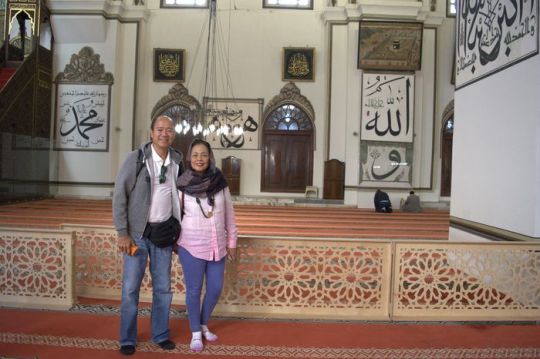
The Ideal Conditions for Growing Roses
Why Kasanlik is Special for Attar Roses
While there are many regions where roses can grow well, Kasanlik has the best conditions for producing roses used in making attar (rose perfume). The attar rose is very sensitive to climate, and no other region is as suitable as Kasanlik for growing these particular roses. For example, in Brussa, Asia Minor, they tried using the same methods as Kasanlik but did not have the same success.
How Roses Are Planted
The Unique Rose Plantations in Kasanlik
Unlike other rose-growing regions, such as Grasse in France, the rose plantations in Kasanlik are not small, isolated plots. Instead, the roses are planted in long, high parallel hedges, about 100 yards long, taller than a man, with a six-foot gap between each hedge Coastal Bulgaria Tours.
The way the roses are planted is also unique to Kasanlik. Large branches of old rose trees are laid horizontally in ditches about 14 inches wide and deep. The branches, which are about a yard long, are placed side by side in the ditch. Then, part of the earth from the ditch is placed lightly on top of the branches, and a small amount of stable manure is added on top.
The Rose Harvest
Timing and Conditions for Picking Roses
The rose harvest starts in mid-May and lasts until mid-June, with the best conditions being moderate temperatures and frequent rain. This ensures a long harvest period of about a month. If the harvest is too quick, it causes problems for the grower. Every day during the blooming period, the flowers that are open or almost open are picked.
A hectare (2.5 acres) of rose bushes usually produces about 6,600 pounds of roses, which equals almost three million flowers. These three million roses will yield just 2.5 pounds of attar.
Distilling Rose Perfume
The Process of Making Attar
The distilling process for rose perfume is simple but requires specific equipment. The main tool is a large copper alembic, about 4 feet 10 inches tall, resting on a brick furnace. The alembic has a cistern (container) with a mushroom-shaped head and a cooling tube.
The cost of the alembic depends on its weight. For example, one weighing around 163 pounds costs about £4 6s. The cooling tube costs between 2s. 6d. and 10s.
The distilling process takes about one to one and a half hours. It is repeated many times until all the petals picked that day have been used. If the petals are left for more than 24 hours before being distilled, much of their fragrance is lost, resulting in a poor yield of attar.
0 notes
Photo
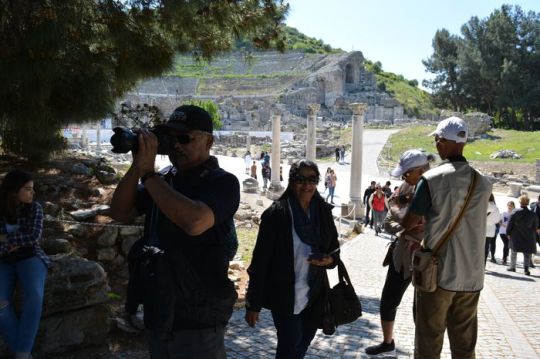
Demonstrations in Sofia 1989 A Call for Justice
The Demand for Accountability
During the demonstrations in Sofia in 1989, a powerful sentiment echoed through the crowds: “The culprits are not one person but a thousand and one. We demand a ‘People’s Tribunal.’” This rallying cry highlighted the collective frustration of the people towards the communist regime. Citizens wanted justice for the wrongs committed against them during years of oppression.
Historical Context
This period marked a significant time in Bulgaria’s history, as the communist regime faced increasing pressure from the public and international forces. Citizens were becoming more aware of the privileges enjoyed by the ruling elite, while they themselves were deprived of basic rights and freedoms.
The Legacy of Oppression
The communist government in Bulgaria maintained a strict hold on power through terror and repression. It implemented policies that not only restricted freedoms but also targeted those who opposed the regime. Many citizens suffered under harsh conditions, and those in power enjoyed significant advantages, including access to better jobs, housing, and healthcare Jeep Safari Bulgaria.
The Role of the Communist Party
The privileges granted to senior Party members and employees of the repressive organs created a stark divide in society. While the ruling elite lived comfortable lives, ordinary citizens struggled with basic needs. The contrast was undeniable and fueled public anger.
Acts of Resistance
Despite the oppressive atmosphere, the Bulgarian people found various ways to resist the dictatorship. Demonstrations, like those in 1989, were not only a form of protest but also a cry for change. The collective efforts of the citizens showcased their courage and determination to fight for a more just and democratic society.
The Importance of Awareness
The project aims to raise public awareness about these historical events. It emphasizes the terror and repression experienced by the Bulgarian people under communism. Understanding this dark chapter in history is essential for recognizing the value of democracy and the rule of law.
A Warning for the Future
This exhibition serves as a political act, in line with the traditions of enlightenment. It aims to inform the public and issue a warning: totalitarianism did not end with the fall of communism. It remains a persistent threat to democratic systems and the rule of law in Europe.
The events of 1989 were crucial in shaping Bulgaria’s journey towards democracy. The fight for justice and accountability continues to resonate today, reminding us of the importance of protecting our rights and freedoms. It is vital to learn from the past to prevent similar abuses from happening in the future. Through awareness and education, we can work towards a society that values justice and democracy for all.
0 notes
Photo

Demonstrations in Sofia 1989 A Call for Justice
The Demand for Accountability
During the demonstrations in Sofia in 1989, a powerful sentiment echoed through the crowds: “The culprits are not one person but a thousand and one. We demand a ‘People’s Tribunal.’” This rallying cry highlighted the collective frustration of the people towards the communist regime. Citizens wanted justice for the wrongs committed against them during years of oppression.
Historical Context
This period marked a significant time in Bulgaria’s history, as the communist regime faced increasing pressure from the public and international forces. Citizens were becoming more aware of the privileges enjoyed by the ruling elite, while they themselves were deprived of basic rights and freedoms.
The Legacy of Oppression
The communist government in Bulgaria maintained a strict hold on power through terror and repression. It implemented policies that not only restricted freedoms but also targeted those who opposed the regime. Many citizens suffered under harsh conditions, and those in power enjoyed significant advantages, including access to better jobs, housing, and healthcare Jeep Safari Bulgaria.
The Role of the Communist Party
The privileges granted to senior Party members and employees of the repressive organs created a stark divide in society. While the ruling elite lived comfortable lives, ordinary citizens struggled with basic needs. The contrast was undeniable and fueled public anger.
Acts of Resistance
Despite the oppressive atmosphere, the Bulgarian people found various ways to resist the dictatorship. Demonstrations, like those in 1989, were not only a form of protest but also a cry for change. The collective efforts of the citizens showcased their courage and determination to fight for a more just and democratic society.
The Importance of Awareness
The project aims to raise public awareness about these historical events. It emphasizes the terror and repression experienced by the Bulgarian people under communism. Understanding this dark chapter in history is essential for recognizing the value of democracy and the rule of law.
A Warning for the Future
This exhibition serves as a political act, in line with the traditions of enlightenment. It aims to inform the public and issue a warning: totalitarianism did not end with the fall of communism. It remains a persistent threat to democratic systems and the rule of law in Europe.
The events of 1989 were crucial in shaping Bulgaria’s journey towards democracy. The fight for justice and accountability continues to resonate today, reminding us of the importance of protecting our rights and freedoms. It is vital to learn from the past to prevent similar abuses from happening in the future. Through awareness and education, we can work towards a society that values justice and democracy for all.
0 notes
Photo
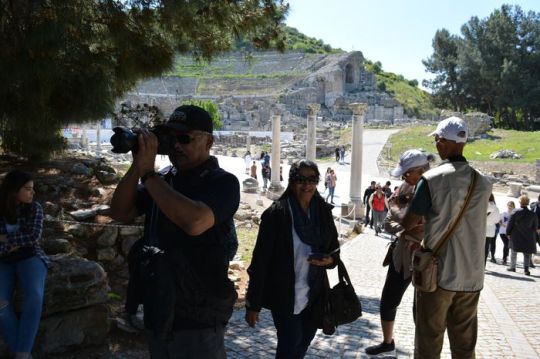
Demonstrations in Sofia 1989 A Call for Justice
The Demand for Accountability
During the demonstrations in Sofia in 1989, a powerful sentiment echoed through the crowds: “The culprits are not one person but a thousand and one. We demand a ‘People’s Tribunal.’” This rallying cry highlighted the collective frustration of the people towards the communist regime. Citizens wanted justice for the wrongs committed against them during years of oppression.
Historical Context
This period marked a significant time in Bulgaria’s history, as the communist regime faced increasing pressure from the public and international forces. Citizens were becoming more aware of the privileges enjoyed by the ruling elite, while they themselves were deprived of basic rights and freedoms.
The Legacy of Oppression
The communist government in Bulgaria maintained a strict hold on power through terror and repression. It implemented policies that not only restricted freedoms but also targeted those who opposed the regime. Many citizens suffered under harsh conditions, and those in power enjoyed significant advantages, including access to better jobs, housing, and healthcare Jeep Safari Bulgaria.
The Role of the Communist Party
The privileges granted to senior Party members and employees of the repressive organs created a stark divide in society. While the ruling elite lived comfortable lives, ordinary citizens struggled with basic needs. The contrast was undeniable and fueled public anger.
Acts of Resistance
Despite the oppressive atmosphere, the Bulgarian people found various ways to resist the dictatorship. Demonstrations, like those in 1989, were not only a form of protest but also a cry for change. The collective efforts of the citizens showcased their courage and determination to fight for a more just and democratic society.
The Importance of Awareness
The project aims to raise public awareness about these historical events. It emphasizes the terror and repression experienced by the Bulgarian people under communism. Understanding this dark chapter in history is essential for recognizing the value of democracy and the rule of law.
A Warning for the Future
This exhibition serves as a political act, in line with the traditions of enlightenment. It aims to inform the public and issue a warning: totalitarianism did not end with the fall of communism. It remains a persistent threat to democratic systems and the rule of law in Europe.
The events of 1989 were crucial in shaping Bulgaria’s journey towards democracy. The fight for justice and accountability continues to resonate today, reminding us of the importance of protecting our rights and freedoms. It is vital to learn from the past to prevent similar abuses from happening in the future. Through awareness and education, we can work towards a society that values justice and democracy for all.
0 notes
Photo
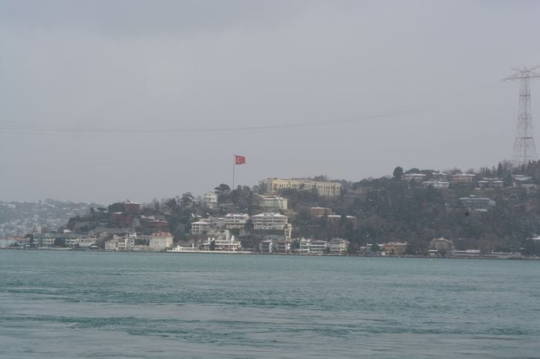
Underground Armed Resistance of the Goriyani
Emergence of the Goriyani Movement
After the communist regime was established in Bulgaria in the autumn of 1944, an underground armed resistance movement began to take shape. This movement was known as the “Goriyani,” or “Forest Dwellers.” Its members came from various backgrounds, primarily rural areas, and included middle-class and poor farmers who strongly opposed the government’s expropriation of their land.
By the end of 1947, peasants made up 47% of those involved in the Goriyani resistance. This number increased to a peak of 70% between 1950 and 1951. As the government eliminated opposition parties and enforced mass collectivization of land, the Goriyani movement spread across the country. Throughout the 1950s, there were very few mountainous regions in Bulgaria that did not have active Goriyani groups, supported by many locals.
Government Response to the Resistance
The communist regime was determined to crush the Goriyani movement. By the end of 1948, this struggle led to the creation of the first internal military battalions. By October 1950, there were ten battalions in total: two in Sofia and one in each of the cities of Plovdiv, Burgas, Varna, Stara Zagora, Yambol, Blagoevgrad, and Belogradchik. The Politburo of the Central Committee of the Bulgarian Communist Party decided to reorganize these internal military troops into a division, increasing their numbers significantly Istanbul Tour Guide.
These troops were trained to operate like the Soviet Union’s internal forces and were expected to show unwavering loyalty to the Communist Party. Their main mission was to fight against and eliminate the Goriyani detachments, thereby suppressing the entire resistance movement in Bulgaria.
State Security Reports and Clashes
By 1951, the State Security reported the existence of 176 underground resistance groups, with 47 located in Sofia. This information highlighted the scale of the Goriyani movement and the challenges facing the regime.
On October 1, 1951, a significant confrontation occurred when 19 young men were killed during an action against a Goriyani detachment in the Turiya forest in the Kazanluk region. Around the same time, State Security troops were engaged in fierce battles with two Goriyani groups in the Iskar River pass, with 30 and 40 members in each group, respectively.
The Goriyani movement represents a crucial chapter in Bulgaria’s struggle against the communist regime. Comprising mainly of farmers and rural citizens, the resistance fought fiercely to defend their rights and land. Despite facing brutal crackdowns from the government, the Goriyani movement reflected the widespread discontent and resilience among the Bulgarian people during a time of oppression. The conflicts and efforts to suppress this movement highlighted the intense struggle between the regime and those who sought to resist its control.
0 notes
Photo

Underground Armed Resistance of the Goriyani
Emergence of the Goriyani Movement
After the communist regime was established in Bulgaria in the autumn of 1944, an underground armed resistance movement began to take shape. This movement was known as the “Goriyani,” or “Forest Dwellers.” Its members came from various backgrounds, primarily rural areas, and included middle-class and poor farmers who strongly opposed the government’s expropriation of their land.
By the end of 1947, peasants made up 47% of those involved in the Goriyani resistance. This number increased to a peak of 70% between 1950 and 1951. As the government eliminated opposition parties and enforced mass collectivization of land, the Goriyani movement spread across the country. Throughout the 1950s, there were very few mountainous regions in Bulgaria that did not have active Goriyani groups, supported by many locals.
Government Response to the Resistance
The communist regime was determined to crush the Goriyani movement. By the end of 1948, this struggle led to the creation of the first internal military battalions. By October 1950, there were ten battalions in total: two in Sofia and one in each of the cities of Plovdiv, Burgas, Varna, Stara Zagora, Yambol, Blagoevgrad, and Belogradchik. The Politburo of the Central Committee of the Bulgarian Communist Party decided to reorganize these internal military troops into a division, increasing their numbers significantly Istanbul Tour Guide.
These troops were trained to operate like the Soviet Union’s internal forces and were expected to show unwavering loyalty to the Communist Party. Their main mission was to fight against and eliminate the Goriyani detachments, thereby suppressing the entire resistance movement in Bulgaria.
State Security Reports and Clashes
By 1951, the State Security reported the existence of 176 underground resistance groups, with 47 located in Sofia. This information highlighted the scale of the Goriyani movement and the challenges facing the regime.
On October 1, 1951, a significant confrontation occurred when 19 young men were killed during an action against a Goriyani detachment in the Turiya forest in the Kazanluk region. Around the same time, State Security troops were engaged in fierce battles with two Goriyani groups in the Iskar River pass, with 30 and 40 members in each group, respectively.
The Goriyani movement represents a crucial chapter in Bulgaria’s struggle against the communist regime. Comprising mainly of farmers and rural citizens, the resistance fought fiercely to defend their rights and land. Despite facing brutal crackdowns from the government, the Goriyani movement reflected the widespread discontent and resilience among the Bulgarian people during a time of oppression. The conflicts and efforts to suppress this movement highlighted the intense struggle between the regime and those who sought to resist its control.
0 notes
Photo
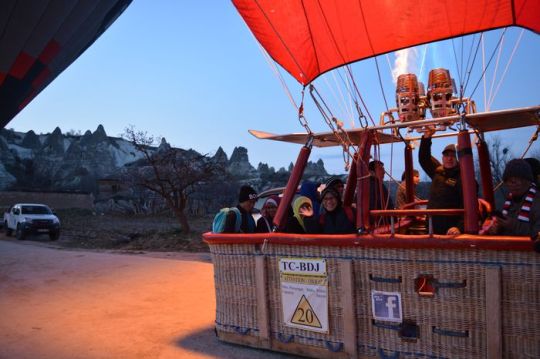
The Marriage and Controversy of King Alexander and Queen Draga
A Surprise Announcement
Amidst speculation about his marital prospects, King Alexander seemingly agreed to marry a German princess, leaving the arrangements to his father, Milan, and Emperor Francis Joseph of Austria. However, Alexander surprised everyone by marrying Draga instead.
Public Outcry
The Serbs, initially indifferent to Alexander’s romantic affairs, were outraged by his marriage to Draga, whom they viewed unfavorably. Rumors circulated about Draga’s past, tarnishing her reputation and fueling public animosity towards her. Regardless of the king’s actions, Draga was often blamed.
Ambition and Intrigue
Behind her royal title, Draga was a woman with ambitions, seeking to elevate her family’s status and secure a succession plan favoring her bloodline. Speculation arose about her purported pregnancy, but subsequent medical examinations dismissed it as impossible. Yet, rumors persisted, suggesting collusion between Draga and her sister to present a false heir Tour Bulgaria.
Growing Discontent
As tales of intrigue spread, discontent simmered among the Serbian populace. Many felt that Alexander and Draga had overstayed their welcome and must be removed from power. However, exile was the extent of the contemplated action, reflecting a desire for change without resorting to drastic measures.
A Tumultuous Era
The marriage of King Alexander and Queen Draga marked a tumultuous period in Serbian history, characterized by scandal, intrigue, and public outcry. Amidst accusations and rumors, the people of Serbia harbored growing discontent, signaling the need for change in their leadership.
0 notes
Photo
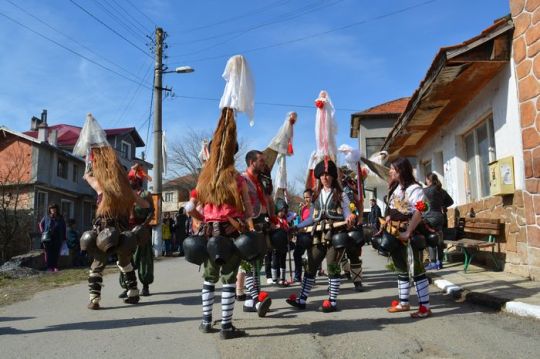
A Tranquil Journey to Avrat-Alan
Refreshing Change of Pace
The journey to Avrat-Alan on horseback offered a welcome reprieve from the jolting discomforts of a Turkish carriage traversing uneven roads. As we ascended into the mountains, a refreshing coolness enveloped us, accompanied by the inviting embrace of dense woodland canopies that provided respite from the relentless sun.
Idyllic Surroundings
Nature’s symphony unfolded around us, with bubbling streams emerging playfully from hidden nooks, reminiscent of joyful children rushing into the arms of their mothers. We found ourselves lingering leisurely in grassy clearings, where our horses indulged in the lush greenery, their contentment compelling us to delay our journey Private Guide Turkey.
Scenic Vistas
Upon reaching the summit of the foothills of the Balkans, we were treated to a breathtaking panorama. Stretching before us lay the vast expanse of the Maritza valley, home to Tatar Bazardjik, Philippopolis, and Adrianople. The eye wandered over miles of undulating plains, culminating in the majestic sweep of the Balkan foothills, delineating the boundary between the Maritza River and the Aegean Sea.
A Journey of Tranquility
Our horseback journey to Avrat-Alan not only provided a serene escape from the clamor of civilization but also bestowed upon us the gift of unparalleled natural beauty. Amidst the tranquil embrace of mountain breezes and verdant forests, we found solace and rejuvenation, cherishing each moment of our leisurely expedition.
0 notes
Photo
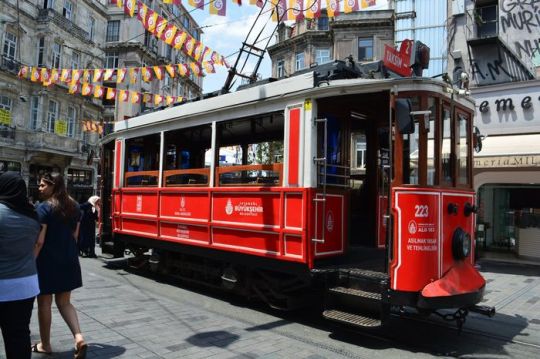
Invocation and Prayer
The religious leader, Nakib el §erif Efendi, commenced the ceremony by kissing the Sultan’s skirts and offering his prayer.
Oath and Allegiance
Kaymakam Pasha, the Admiral, and the Chief of the corps of halberdiers approached with the roll, standing to the right of the Sultan. The Sheikhulislam followed, taking his oath of allegiance, praying, and then joining the religious leader.
Ceremonial Gestures
Kaymakam Pasha, adorned in ceremonial attire, stooped and kissed the Sultan’s skirts, receiving applause. Upon the Sultan’s request for a repetition of the applause, it was granted. The Admiral, also applauded twice, stood beside Kaymakam Pasha and introduced forthcoming officials Istanbul Fun Tours.
Announcement of Accession
Following the ceremonies, the Chief Town-crier Agha was tasked with announcing the Imperial Accession to the throne from the four major mosques: Ayasofya, §ehzade, Süleymaniye, and Sultanahmet.
Ceremonial Protocol
During Sultan Mustafa Khan’s reign, officials took oaths in ceremonial attire, mirroring tradition. However, this time, the ceremony unfolded differently.
Rituals for the Departed Sultan
The late Sultan Abdulhamit I was taken from the Harem gate for ritual ablution performed by the Master Yazici under a baldachin. Upon the purse-bearer’s notification of protocol requirements, permission was granted for the necessary ceremonies. The Sheikhulislam, Kaymakam Pasha, and the Admiral paid their respects to the departed Sultan before departing themselves.
This account underscores the solemn rituals and ceremonial protocols observed during the transition of power and the mourning rites for the deceased Sultan.
0 notes